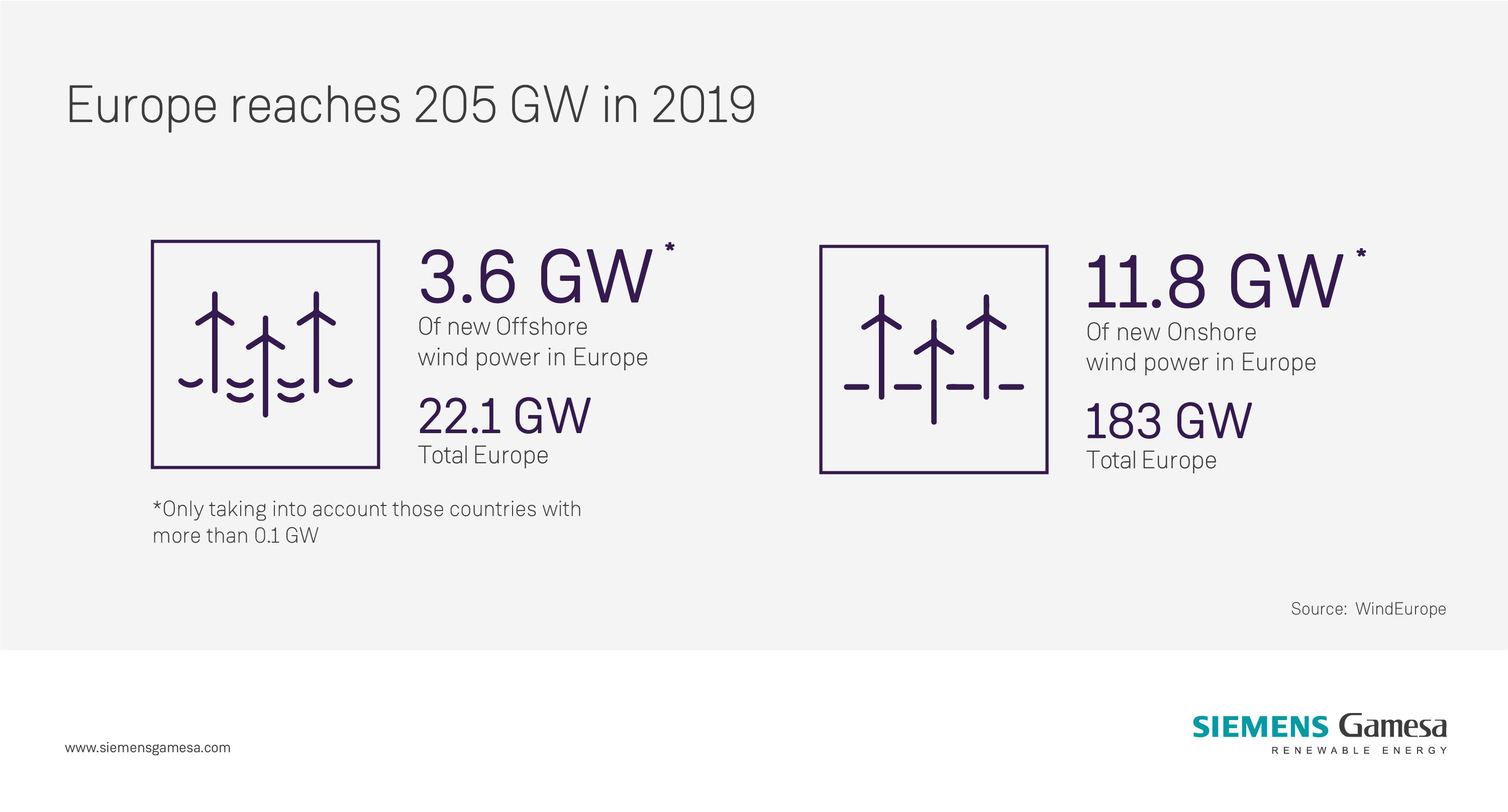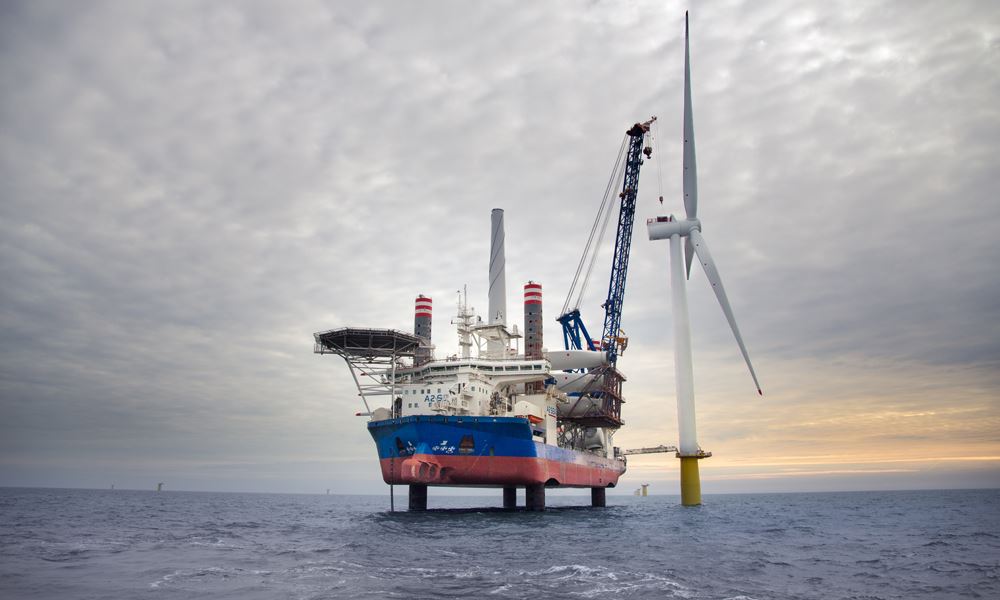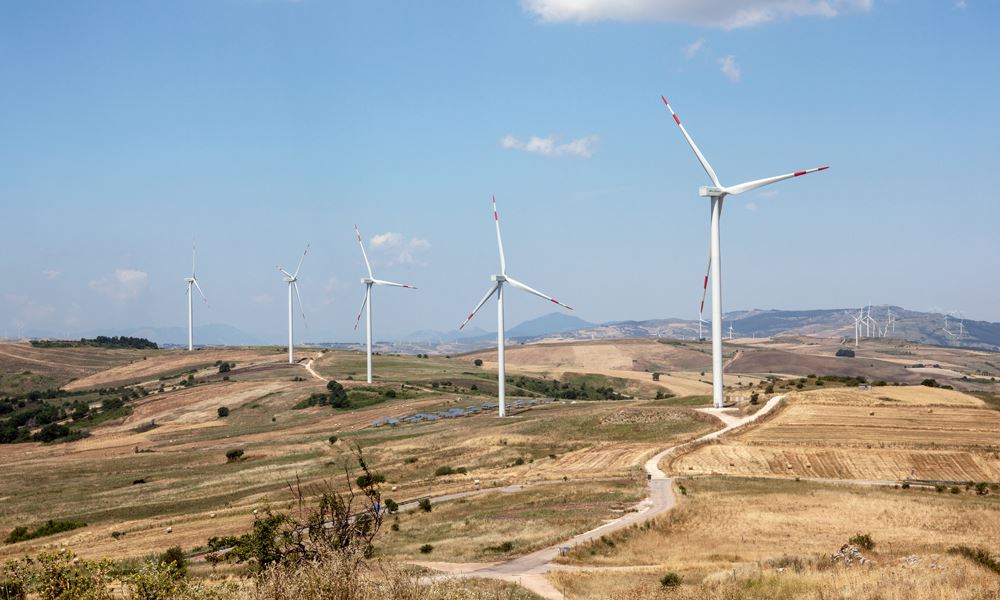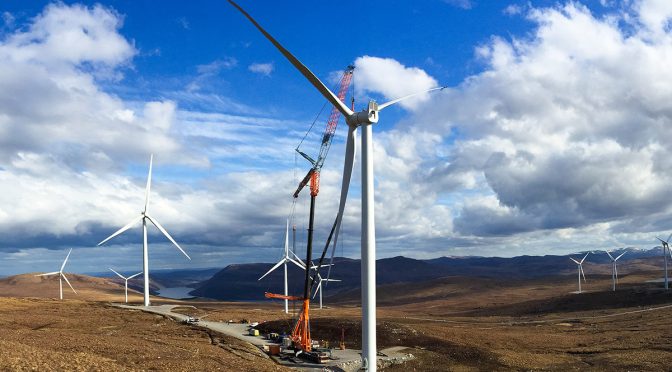Fifteen percent of total European electricity consumption comes from wind power. That is thanks to the installation of an additional 15.4 GW of wind farm capacity in 2019, which takes the total of wind energy capacity across the continent to 205 GW, according to the latest annual WindEurope report. But while these figures are are encouraging they are still a long way from what will be required to meet EU targets.
The report includes data on both offshore and onshore wind turbines and provides a vision of the progress that the wind farm sector is making. Nevertheless, much remains to be done to make this clean and inexhaustible energy one of the basic pillars of the clean Europe that society is demanding.

- 0102
Offshore
One of the industry’s great advances has been the development of offshore wind power. The WindEurope report noted that investment in this sector is increasing.
WindEurope highlighted the advances and progress of Northern European
countries, including the United Kingdom, which accounted for almost
half of installed capacity in 2019 with a total of 1.7 GW. Furthermore,
despite having a considerably smaller coastal area, Germany installed
1.1 GW last year. Investments by smaller countries such as Belgium, the
Netherlands and Denmark cannot be ignored either, which, although they
are not striking in absolute terms, are impressive per capita
investment.

A key element in this development and
drive towards offshore wind energy have been technological advances
which have enabled the power and size of the installations to increase
and prices to fall. This was apparent last year’s auctions in the United
Kingdom, France and the Netherlands which saw a price range of €40-50
per MWh, meaning that the price of producing wind power fell below
nuclear, combustion or gas. In addition, strong investments in offshore
have been announced over the next few years (around €6 billion) that
will contribute an additional 1.4GW to existing capacity.
Onshore
In 2019 the number of onshore
facilities, which have a longer life time, have continued to increase.
Onshore facilities are an indispensable part of the wind industry, due
to their lower complexity and as they are the only type of wind energy
that many countries can produce. Indeed, the report highlighted that
onshore plants represented 11.8 GW of the total 15.4 GW at European
level.

The country to lead annual installation in 2019 was Spain (2.3 GW), followed by Sweden (1.6 GW) and France (1.3 GW). Behind those countries were Germany (1.1 GW) and the United Kingdom (0.7 GW). In the case of Germany, its heavy investment in offshore contrasted with a decline in onshore installation to the lowest level since 2000. This trend looks likely to continue in 2020 given that investments announced to date are not significant.
However, WindEurope remains optimistic about countries such as Spain,
which appears ready again to resume investments after several years at
low levels. Spain might also be joined by Sweden, which registered
record installations record last year. Finally, while installation in
France did register some stagnation in 2019, it is expected to continue
progressing this year.
Wind energy as a key to the future
The wind sector continues to make progress, although it will require much larger large investments, than at present in order to reach the targets set by the European Union in its European Green Deal. Data in the WindEurope report also showed that offshore has a more positive outlook than onshore, even if both are complementary and indispensable to meet targets for EU carbon neutrality by 2050.
However, according to WindEurope’s calculations Europe is still far from its goals for 2050 and would need to install twice as many GWs as installed in 2019 every year until mid-century.


